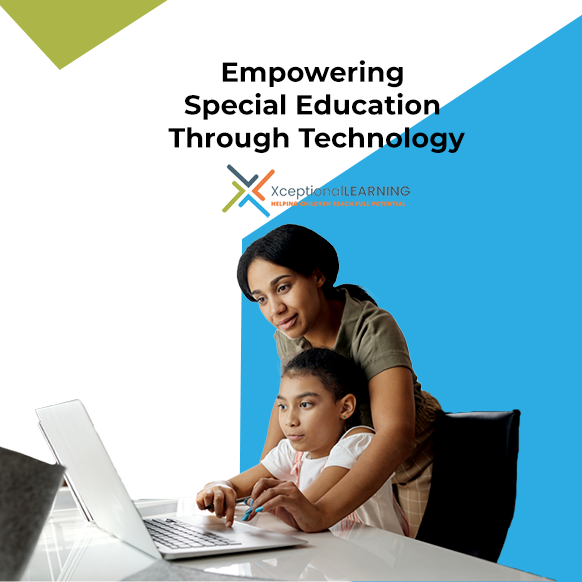Empowering Special Education Through Technology
admin June 7th, 2024
– Clinically Reviewed by
Jinson Alias
Msc. Psychology, BEd in Special Education (ID)
Consultant Psychologist, Special Educator & Digital Therapy Trainer
In today’s ever-evolving educational landscape, the integration of technology has emerged as a powerful tool for enhancing learning outcomes and fostering inclusivity. Nowhere is this more evident than in the realm of special education, where innovative technologies are revolutionizing the way students with diverse needs access and engage with educational content. In this blog, we’ll explore how technology is empowering special education, and offer insights into best practices for leveraging these tools to support students with diverse learning needs.
Understanding the Landscape of Special Education
Special education encompasses a wide range of learning disabilities, developmental delays, and other challenges that may impact a student’s ability to learn in traditional educational settings. From autism spectrum disorder to dyslexia, each student’s needs are unique, requiring tailored approaches and accommodations to support their learning journey. Historically, special education programs have faced challenges in providing equitable access to educational resources and opportunities for students with diverse needs. However, advancements in technology have opened up new possibilities for addressing these challenges and empowering students to succeed academically and socially.
The Role of Technology in Special Education
Technology has the potential to level the playing field for students with diverse needs by providing personalized learning experiences, adaptive tools, and assistive technologies that cater to their individual strengths and challenges. From speech-to-text software to interactive educational games, technology offers a wide range of tools and resources that can support students with special needs in various ways:
- Personalized Learning: Technology enables educators to customize instructional materials and activities to meet the unique needs and preferences of students with diverse learning profiles. Adaptive learning platforms can dynamically adjust the difficulty level of tasks based on student performance, ensuring that each student is appropriately challenged and supported.
- Assistive Technologies: Assistive technologies, such as text-to-speech software, alternative input devices, and visual aids, can help students with disabilities access and interact with educational content more effectively. These tools empower students to overcome barriers to learning and participate more fully in classroom activities.
- Communication Supports: For students with speech or language impairments, technology can serve as a valuable communication aid, providing alternative means of expression and interaction. Augmentative and alternative communication (AAC) devices, for example, enable students to communicate using symbols, pictures, or text-to-speech output.
- Social Skills Development: Technology can also play a role in supporting the social and emotional development of students with special needs. Social skills training programs, virtual reality simulations, and online social networks offer opportunities for students to practice social interactions in safe and controlled environments.
Best Practices for Integrating Technology in Special Education
While technology holds great promise for empowering special education, it’s essential to approach its integration thoughtfully and intentionally. Here are some best practices for effectively leveraging technology to support students with diverse needs:
- Individualized Assessments: Conduct comprehensive assessments to identify each student’s strengths, challenges, and learning preferences. Use this information to inform the selection and customization of technology tools and resources.
- Collaborative Planning: Continuous collaboration among educators, special education professionals, parents, and students to develop personalized learning plans that incorporate technology effectively. Ensure that everyone involved understands their roles and responsibilities in supporting the student’s learning journey.
- Universal Design for Learning (UDL): Embrace the principles of Universal Design for Learning, which advocate for the creation of flexible learning environments that accommodate diverse learners’ needs. Use technology to provide multiple means of representation, expression, and engagement to enhance accessibility and inclusivity.
- Ongoing Training and Support: Provide educators with professional development opportunities to build their skills and confidence in integrating technology into their teaching practice. Offer ongoing support and troubleshooting resources to address any challenges that arise during implementation.
- Data-Driven Decision Making: Use data analytics and assessment tools to monitor students’ progress, track their performance, and adjust instructional strategies as needed. Leverage technology to collect and analyse data systematically, enabling educators to make informed decisions about instructional interventions and accommodations.
XceptionalLEARNING : A Platform Tailored for Every Student
- Personalized Learning Paths: XceptionalLEARNING’ s adaptive algorithms analyse each student’s strengths, weaknesses, and learning preferences to create personalized learning paths. This ensures that students receive targeted instruction and support tailored to their unique needs, maximizing their learning potential.
- Accessibility Features: XceptionalLEARNING prioritizes accessibility by incorporating a wide range of features and tools designed to accommodate diverse learning styles and abilities. From customizable text sizes and audio descriptions to alternative input methods, the platform ensures that every student can access and engage with educational content effectively.
- Multi-Sensory Learning Experiences: XceptionalLEARNING leverages multimedia resources, interactive simulations, and gamified activities to create engaging and immersive learning experiences. By incorporating visual, auditory, and tactile stimuli, the platform caters to the diverse sensory preferences of students with special needs, enhancing their comprehension and retention of information.
- Real-Time Progress Tracking: XceptionalLEARNING’ s analytics dashboard provides educators with real-time insights into students’ progress, performance, and engagement levels. This enables educators to monitor students’ learning trajectories, identify areas for improvement, and adjust instructional strategies accordingly, ensuring that no student is left behind.
- Collaboration and Communication Tools: XceptionalLEARNING facilitates communication and collaboration among students, educators, and parents through its built-in messaging systems, discussion forums, and virtual classrooms. This promotes a sense of community and support, ensuring social connections and peer learning opportunities for students with special needs.
In Conclusion, the intersection of technology and special education represents a transformative shift in the way we approach learning and support for students with diverse needs. Platforms like XceptionalLEARNING are at the forefront of this revolution, leveraging technology to provide personalized, inclusive, and empowering educational experiences. For inquiries, partnerships, or to learn more about how technology can revolutionize special education, Please connect with our team for more information. We’re eager to connect with educators, parents, and organizations dedicated to making a difference.

